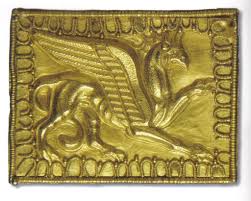It looks like you're using an Ad Blocker.
Please white-list or disable AboveTopSecret.com in your ad-blocking tool.
Thank you.
Some features of ATS will be disabled while you continue to use an ad-blocker.
share:
reply to post by angelchemuel
A Welsh angel, you couldn't have been sent at a better time! Did you see Logarock's post above yours? What is the Welsh story about the origins of the Dragon flag? I have absolutely no idea.
In response to Log, then given what we already know, it just must be antecedence, unless Jane can explain otherwise?
A Welsh angel, you couldn't have been sent at a better time! Did you see Logarock's post above yours? What is the Welsh story about the origins of the Dragon flag? I have absolutely no idea.
In response to Log, then given what we already know, it just must be antecedence, unless Jane can explain otherwise?
edit on 22-3-2014 by
beansidhe because: sp
Ramcheck
I'm not totally down with this whole YT channel, the conspiracy angle they take, or whatever. But I do make a point of listening to Alan Wilson. He knows his stuff when it comes to Welsh and Southern English Celtic origins.
Did you see Logarock's link earlier? It's excellent as well.
Yes, he does seem to know his stuff and his view of the Khumri/Cymry ties in eerily well with our thoughts about the Dans, don't you think?
Logarock
reply to post by beansidhe
They say, I have always heard that no one knows where the Welsh dragon comes from. No antecedence. But this must be antecedence.
This is the 'official' story:
The flag was granted official status in 1959, but the red dragon itself has been associated with Wales for centuries, though the origin of the adoption of the dragon symbol is now lost in history and myth. A possible theory is that the Romans brought the emblem to what is now Wales during their occupation of Britain in the form of the Draco standards born by the Roman cavalry, itself inspired by the symbols of the Dacians or Parthians.[1] The green and white stripes of the flag were additions by the House of Tudor, the Welsh dynasty that held the English throne from 1485 to 1603.
Source
I prefer your theory!
Sorry, I haven't been able to catch up on the 40 or so pages as I said I would....had to go out....but I'm back for the rest of the day
OK.....2 things I can help you with atm.....
The green and white of the flag.....the green represents the country...much like Ireland thought of as being green fields or Tom Jones' song Green, Green grass of home . The white signifies God.....because by the dates put forward, Wales had been 'christianised'. The red of the dragon, as opposed to any other colour simply represents blood...the blood of the people.
I'll have to get back to you about the dragon itself once I've done the back reading.
Coelbren alphabet. Allan Wilson does indeed have a vid (interview) where he explains it. I've done a quick search, and there are quite a few. I'll need to dig further to find the one where he uses Cleopara's name as an example.
The simplest way is to take Cleopatra's name in hieroglyphics. Each of the pictures represents a welsh word.
The first 'symbol' looks like a corner...welsh = Cornel
The second symbol is a lion....welsh = Llew
You get the idea....Wilson says that if you know the welsh word for each of the symbols....you can read hieroglyphs.....but only from a certain age in egyptology.
I'll be back....sausage and egg butty first while I read!
Rainbows
Jane
OK.....2 things I can help you with atm.....
The green and white of the flag.....the green represents the country...much like Ireland thought of as being green fields or Tom Jones' song Green, Green grass of home . The white signifies God.....because by the dates put forward, Wales had been 'christianised'. The red of the dragon, as opposed to any other colour simply represents blood...the blood of the people.
I'll have to get back to you about the dragon itself once I've done the back reading.
Coelbren alphabet. Allan Wilson does indeed have a vid (interview) where he explains it. I've done a quick search, and there are quite a few. I'll need to dig further to find the one where he uses Cleopara's name as an example.
The simplest way is to take Cleopatra's name in hieroglyphics. Each of the pictures represents a welsh word.
The first 'symbol' looks like a corner...welsh = Cornel
The second symbol is a lion....welsh = Llew
You get the idea....Wilson says that if you know the welsh word for each of the symbols....you can read hieroglyphs.....but only from a certain age in egyptology.
I'll be back....sausage and egg butty first while I read!
Rainbows
Jane
reply to post by angelchemuel
Ah, right, thank you Jane. I'll have a look for them, definitely.
And thanks for explaining the flag. Take your time reading, fried eggs should not be rushed. There's good bits and not so good bits but it'll show you how we got to the bit we're now at, making links between Thracian dragons and Wales. It does all make sense, honestly!
It's all very, very odd and not what I was taught at all, but it is slowly starting to make sense in my mind. We'd certainly welcome some Welsh input, and your opinion
Ah, right, thank you Jane. I'll have a look for them, definitely.
And thanks for explaining the flag. Take your time reading, fried eggs should not be rushed. There's good bits and not so good bits but it'll show you how we got to the bit we're now at, making links between Thracian dragons and Wales. It does all make sense, honestly!
It's all very, very odd and not what I was taught at all, but it is slowly starting to make sense in my mind. We'd certainly welcome some Welsh input, and your opinion
reply to post by beansidhe
I wonder about this...
Look closely at these links:
Old Hungarian Runic Script
Old Turkic Script
Tamgas
Notice that the "Yew" symbol is present in these as well but I would like more information on their respective meanings/associations in these alphabets before moving further.
Will go look into that deeper.
I wonder about this...
Look closely at these links:
Old Hungarian Runic Script
The Hungarian Runes are derived from the Old Turkic script,[6] itself recorded in inscriptions dating from c. AD 720. The Old Turkic script was presumably derived from Asian scripts such as the Pahlavi and Sogdian alphabets, or possibly from Karosthi, all of which are in turn remotely derived from the Aramaic script.[7]
Old Turkic Script
The origins of the Turkic scripts are uncertain. The initial guesses were based on visual, external resemblances of the Turkic runiform letters with the Gothic runes or with Greek, Etruscan and Anatolian letters, suggesting an Indo-European Alphabet resembling Semitic Phoenician, Gothic, Phoenician-based Greek, etc. letters.[8]
Thomsen (1893) connected the script to the reports of Chinese account (Shiji, vol. 110) from a 2nd-century BC Chinese Yan renegade and dignitary named Zhonghang Yue (Chinese: 中行说) who
"taught the Shanyu (rulers of the Xiongnu) to write official letters to the Chinese court on a wooden tablet (Chinese: 牍) 31 cm long, and to use a seal and large-sized folder".
The same sources tell that when the Xiongnu noted down something or transmitted a message, they made cuts on a piece of wood (ko-mu), and they also mention a "Hu script". At Noin-Ula and other Hun burial sites in Mongolia and region north of Lake Baikal, the artifacts displayed over twenty carved characters. Most of these characters are either identical or very similar to the letters of the Turkic Orkhon script.[18]
It is also very probable that some prototypes of Ancient Turkic runes descend from primeval Turkic graphic logograms.[16][17] At the same time, the Turkic runic alphabet represents a very rich and expressly developed independently graphic system. However, the paleographic analysis of the Ancient Turkic runes, in turn, leads to a conclusion about very early forming date for the Turkic runic alphabet in Southern Siberia and Jeti-Su, not later than the middle of the 1st millennium BC.[17]
Tamgas
A tamga or tamgha "stamp, seal" (Mongolian: tamga, Turkish: damga) is an abstract seal or stamp used by Eurasian nomadic peoples and by cultures influenced by them. The tamga was normally the emblem of a particular tribe, clan or family. They were common among the Eurasian nomads throughout Classical Antiquity and the Middle Ages (including Alans, Mongols, Sarmatians, Scythians and Turkic peoples).
Notice that the "Yew" symbol is present in these as well but I would like more information on their respective meanings/associations in these alphabets before moving further.
Will go look into that deeper.
reply to post by muzzleflash
They are incredibly close to runes and Coelbren:

The disputes on the Newton stone centred around the glyphs, but neither of the alphabets you mentioned were considered, if I remember rightly. I wonder why not? You've reminded me that I was going to go for a proper look at the Newton stone, because the descriptions and illustrations just don't match up.
They are incredibly close to runes and Coelbren:

The disputes on the Newton stone centred around the glyphs, but neither of the alphabets you mentioned were considered, if I remember rightly. I wonder why not? You've reminded me that I was going to go for a proper look at the Newton stone, because the descriptions and illustrations just don't match up.
reply to post by muzzleflash
...and the "Igdir" symbol from the list of Tamga seals closely resembles the Sig rune mentioned earlier.
"Ig"dir and "Sig" rune? Co-incidence or actual connection?
(also noticed that the Tamga seal for the Ottoman ghazi state was described as a Bow which...
"...was highly stylized, so much so that the bow was stylized down eventually to a crescent moon."
Haven't we seen that symbol before somewhere?? Pictish maybe hmm!)
G
...and the "Igdir" symbol from the list of Tamga seals closely resembles the Sig rune mentioned earlier.
"Ig"dir and "Sig" rune? Co-incidence or actual connection?
(also noticed that the Tamga seal for the Ottoman ghazi state was described as a Bow which...
"...was highly stylized, so much so that the bow was stylized down eventually to a crescent moon."
Haven't we seen that symbol before somewhere?? Pictish maybe hmm!)
G
edit on 22-3-2014 by Gordi The Drummer because: I wanted to fix the grammar
reply to post by beansidhe
On the topic of the origins of the Welsh dragon...
I was flicking through a book on "The Picts" when I noticed a photo of a Stone which is attributed to the Rossie Church?

The detail in the panel on the bottom left shows two "Dragon" beasts battling with huge birds.
Each Dragon has a bird-head in it's mouth, and has its foreleg raised, to grapple the bird's neck.
The Birds body & wings sit on the back of the Dragon.
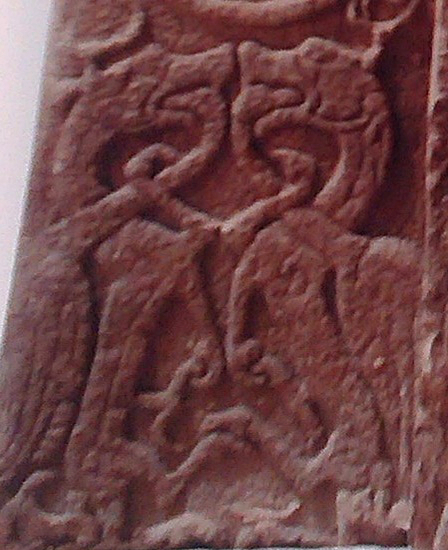 Could this be a re-telling of a legendary battle perhaps?
Could this be a re-telling of a legendary battle perhaps?
Well, if you separate the two Dragons.... to focus on just one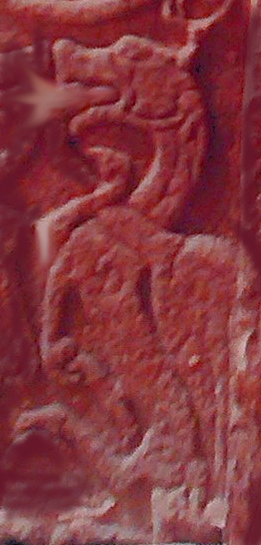
...and rotate the image... to the horizontal...
Doesn't it start to look quite familiar?
Is the Welsh Dragon, a memory of a great victory in battle? (Arthur?)
Anyone know what/who the huge bird could represent?
G
On the topic of the origins of the Welsh dragon...
I was flicking through a book on "The Picts" when I noticed a photo of a Stone which is attributed to the Rossie Church?

The detail in the panel on the bottom left shows two "Dragon" beasts battling with huge birds.
Each Dragon has a bird-head in it's mouth, and has its foreleg raised, to grapple the bird's neck.
The Birds body & wings sit on the back of the Dragon.

Well, if you separate the two Dragons.... to focus on just one

...and rotate the image... to the horizontal...

Doesn't it start to look quite familiar?
Is the Welsh Dragon, a memory of a great victory in battle? (Arthur?)
Anyone know what/who the huge bird could represent?
G
reply to post by Gordi The Drummer
Wow. It could, you know. It has the same raised hands/arms as the Thracian/Welsh dragon. And that looks like a bird headed man in the top right, which I haven't seen before. They appear on a couple of stones, but I've never seen it on this one.
ETA: It's also got Hathor hair in the top left corner on a cat? Monkey? This is a curious stone.
Let me do some reading, and I'll be right back
Wow. It could, you know. It has the same raised hands/arms as the Thracian/Welsh dragon. And that looks like a bird headed man in the top right, which I haven't seen before. They appear on a couple of stones, but I've never seen it on this one.
ETA: It's also got Hathor hair in the top left corner on a cat? Monkey? This is a curious stone.
Let me do some reading, and I'll be right back
edit on 23-3-2014 by beansidhe because: (no reason given)
edit on 23-3-2014
by beansidhe because: Left, not right!
reply to post by Gordi The Drummer
Apparently the Black Book of Carmarthen (Welsh) tells:
"Though Arthur was but playing,
blood was flowing
in the hall of Afarnach
fighting with a hag.
He pierced the cudgel-head
in the halls of Dissethach
On the mount of Eidyn
they fought the dog-heads
by the hundreds they fell."
The Pictish Warrior
Which relates to the battle at Edinburgh, Dun Eidyn, which we know about from Y Gododdin, where Arthur and his troops including the Picts defeated the Northumbrians.
So can we maybe assume that the dragon represents Arthur?
Apparently the Black Book of Carmarthen (Welsh) tells:
"Though Arthur was but playing,
blood was flowing
in the hall of Afarnach
fighting with a hag.
He pierced the cudgel-head
in the halls of Dissethach
On the mount of Eidyn
they fought the dog-heads
by the hundreds they fell."
The Pictish Warrior
Which relates to the battle at Edinburgh, Dun Eidyn, which we know about from Y Gododdin, where Arthur and his troops including the Picts defeated the Northumbrians.
So can we maybe assume that the dragon represents Arthur?
beansidhe
Logarock
reply to post by beansidhe
They say, I have always heard that no one knows where the Welsh dragon comes from. No antecedence. But this must be antecedence.
This is the 'official' story:
The flag was granted official status in 1959, but the red dragon itself has been associated with Wales for centuries, though the origin of the adoption of the dragon symbol is now lost in history and myth. A possible theory is that the Romans brought the emblem to what is now Wales during their occupation of Britain in the form of the Draco standards born by the Roman cavalry, itself inspired by the symbols of the Dacians or Parthians.[1] The green and white stripes of the flag were additions by the House of Tudor, the Welsh dynasty that held the English throne from 1485 to 1603.
Source
I prefer your theory!
Well now don't the Greeks and Roman get credit for everything. And the Celts of all stripe were just a disorganized mob that happened to take over Europe long before Rome ever thought about it.
To me it looks like some of this is part of some instructions for making mail clothing such as is found in ancient armor. Some looks like binding
hardware for possibly leather straps. some looks like patterns of crocheting possibly used on clothing.
Could have to do with rope fasteners also.
Why does everything have to be about language or gods? Can't people write down clothing stuff, my wife has these little x's in strange patterns written on paper for her knitting, they make little sense to me.
Someone should try making a scarf using that one pattern.
Could have to do with rope fasteners also.
Why does everything have to be about language or gods? Can't people write down clothing stuff, my wife has these little x's in strange patterns written on paper for her knitting, they make little sense to me.
Someone should try making a scarf using that one pattern.
edit on 23-3-2014 by rickymouse because: (no reason given)
reply to post by Logarock
There was something in the paper the other day about a new Roman drainage system uncovered somewhere in England. Clearly the Romans! Honestly.
These 'fish monsters':
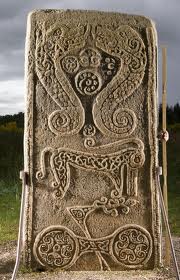
couldn't be more Dacian if they tried. And that's a phrase I don't get to say every day.
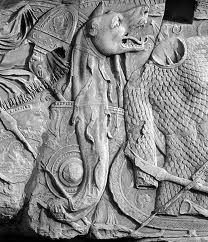
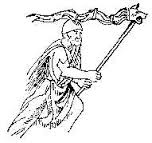
There was something in the paper the other day about a new Roman drainage system uncovered somewhere in England. Clearly the Romans! Honestly.
These 'fish monsters':

couldn't be more Dacian if they tried. And that's a phrase I don't get to say every day.


reply to post by beansidhe
Weren't there early Celtic invasions of Dacia/Thrace after Alexander The Great Died?
Hang on... < checking > I hate wiki, but..... yep, there's mention of it there LINK TO wiki
What's that... 3rd Cent. BC?
How does that fit in with the date of the carvings on the Pictish stone slabs?
Did the Celts pick up some Dacian/Thracian influences? Intermingle? and/or Absorb?
Were they then overthrown/kicked out Did they then come to the (now) British Isles? ...Intermingle? & co-influence?
And what do you know....
So the Celts did invade Dacia/Thrace and fought them at a place called Haemus Mons, whose name just happens to have a direct link to a legend about a Dragon fighting a "God"??? Is it JUST ME???
Weren't there early Celtic invasions of Dacia/Thrace after Alexander The Great Died?
Hang on... < checking > I hate wiki, but..... yep, there's mention of it there LINK TO wiki
What's that... 3rd Cent. BC?
How does that fit in with the date of the carvings on the Pictish stone slabs?
Did the Celts pick up some Dacian/Thracian influences? Intermingle? and/or Absorb?
Were they then overthrown/kicked out Did they then come to the (now) British Isles? ...Intermingle? & co-influence?
wikipedia
"In 298 BC, the Celts attempted a penetrating attack into Thrace and Macedon where they suffered a heavy defeat near Haemus Mons at the hands of Cassander. However, another body of Celts led by the general Cambaules marched on Thrace, capturing large areas."
And what do you know....
wiki page on Haemus Mons
"In earlier times the Balkan mountains were known as the Haemus Mons /ˈhiːməs ˈmɒnz/. It is believed that the name is derived from a Thracian word *saimon, 'mountain ridge', which is unattested but conjectured as the original Thracian form of Greek Haimos.
Another classic etymology derives the name 'Haemos' from the myth about the fight of Zeus and the dragon Typhon:
“He was again driven to Thrace and hurled entire mountains at Zeus in the battle around Mount Haemus. When these bounced back upon him under the force of the thunderbolt, blood gushed out on the mountain. From this, they say, the mountain is called haemus" (“bloody”)
So the Celts did invade Dacia/Thrace and fought them at a place called Haemus Mons, whose name just happens to have a direct link to a legend about a Dragon fighting a "God"??? Is it JUST ME???
reply to post by beansidhe
Here comes the side saddle lady!
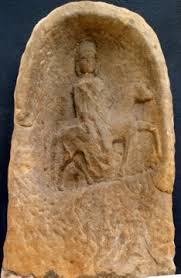
This pic above is from France
This below is our Pictish lady sidesaddle.
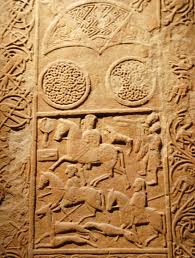
Epona of Celtic Thrace
(we are moving in for the kill)
Here comes the side saddle lady!

This pic above is from France
This below is our Pictish lady sidesaddle.

Epona of Celtic Thrace
(we are moving in for the kill)
edit on 23-3-2014 by Logarock because: n
beansidhe
reply to post by rickymouse
I'll knit it if you promise not to laugh when I model it for you. Deal?
Sounds good, can you use some 24 carrot gold yarn in it to repel mosquitoes.
How silly I am, You do not need a scarf when mosquitoes are out.
reply to post by Gordi The Drummer
Lol!
Glad it's starting to get to you too!
3 BC sounds like the perfect time frame to me, just ideal.
The stones are dated around 5 AD-8AD ish and particularly the ones with Christian iconography are given later dates. But the more I read, the more I'm wondering if the Picts weren't following an Abrahamic,Old Testament religion long, long before Christianity was said to be brought to them.
I believe, still, that they were the indigenous people of Scotland who came after the Ice Age. They seem to have been able to adapt well to invaders and visitors alike, adopting their motifs whilst maintaining their own unique identity, much like the 'Celts', who were probably the same stock anyway. It's my guess also that some folk stayed, inter-married and there was a fair bit of give and take in the 'purity' (for want of a better word) of groups, anyway. There is undeniable Med influence in these stones, no question about it.
I read earlier that 1% of modern Scots have Phoenician DNA, even today.
In terms of the Dragon legend - good find!! These Celts defeated a group of Dragon bearing warriors - aargh! Love it!
Lol!
Glad it's starting to get to you too!
3 BC sounds like the perfect time frame to me, just ideal.
The stones are dated around 5 AD-8AD ish and particularly the ones with Christian iconography are given later dates. But the more I read, the more I'm wondering if the Picts weren't following an Abrahamic,Old Testament religion long, long before Christianity was said to be brought to them.
I believe, still, that they were the indigenous people of Scotland who came after the Ice Age. They seem to have been able to adapt well to invaders and visitors alike, adopting their motifs whilst maintaining their own unique identity, much like the 'Celts', who were probably the same stock anyway. It's my guess also that some folk stayed, inter-married and there was a fair bit of give and take in the 'purity' (for want of a better word) of groups, anyway. There is undeniable Med influence in these stones, no question about it.
I read earlier that 1% of modern Scots have Phoenician DNA, even today.
In terms of the Dragon legend - good find!! These Celts defeated a group of Dragon bearing warriors - aargh! Love it!
reply to post by Logarock
Whoa!
Well in! What a find!!!
The first thing that comes to mind is the Epidii tribe in Kintyre! Oh my goodness, I'm going to read that link.
Whoa!
Well in! What a find!!!
The first thing that comes to mind is the Epidii tribe in Kintyre! Oh my goodness, I'm going to read that link.
new topics
-
America's Greatest Ally
General Chit Chat: 30 minutes ago -
President BIDEN's FBI Raided Donald Trump's Florida Home for OBAMA-NORTH KOREA Documents.
Political Conspiracies: 5 hours ago -
Maestro Benedetto
Literature: 7 hours ago -
Is AI Better Than the Hollywood Elite?
Movies: 7 hours ago -
Las Vegas UFO Spotting Teen Traumatized by Demon Creature in Backyard
Aliens and UFOs: 10 hours ago -
2024 Pigeon Forge Rod Run - On the Strip (Video made for you)
Automotive Discussion: 11 hours ago -
Gaza Terrorists Attack US Humanitarian Pier During Construction
Middle East Issues: 11 hours ago
top topics
-
President BIDEN's FBI Raided Donald Trump's Florida Home for OBAMA-NORTH KOREA Documents.
Political Conspiracies: 5 hours ago, 26 flags -
Krystalnacht on today's most elite Universities?
Social Issues and Civil Unrest: 16 hours ago, 9 flags -
Gaza Terrorists Attack US Humanitarian Pier During Construction
Middle East Issues: 11 hours ago, 8 flags -
Supreme Court Oral Arguments 4.25.2024 - Are PRESIDENTS IMMUNE From Later Being Prosecuted.
Above Politics: 16 hours ago, 8 flags -
Weinstein's conviction overturned
Mainstream News: 15 hours ago, 8 flags -
Massachusetts Drag Queen Leads Young Kids in Free Palestine Chant
Social Issues and Civil Unrest: 13 hours ago, 7 flags -
Las Vegas UFO Spotting Teen Traumatized by Demon Creature in Backyard
Aliens and UFOs: 10 hours ago, 6 flags -
Meadows, Giuliani Among 11 Indicted in Arizona in Latest 2020 Election Subversion Case
Mainstream News: 13 hours ago, 5 flags -
2024 Pigeon Forge Rod Run - On the Strip (Video made for you)
Automotive Discussion: 11 hours ago, 4 flags -
Is AI Better Than the Hollywood Elite?
Movies: 7 hours ago, 3 flags
active topics
-
Gaza Terrorists Attack US Humanitarian Pier During Construction
Middle East Issues • 30 • : Asher47 -
Electrical tricks for saving money
Education and Media • 8 • : anned1 -
Is AI Better Than the Hollywood Elite?
Movies • 16 • : 5thHead -
Hate makes for strange bedfellows
US Political Madness • 48 • : Terpene -
America's Greatest Ally
General Chit Chat • 0 • : 19Bones79 -
President BIDEN's FBI Raided Donald Trump's Florida Home for OBAMA-NORTH KOREA Documents.
Political Conspiracies • 17 • : BingoMcGoof -
Supreme Court Oral Arguments 4.25.2024 - Are PRESIDENTS IMMUNE From Later Being Prosecuted.
Above Politics • 90 • : Lumenari -
Las Vegas UFO Spotting Teen Traumatized by Demon Creature in Backyard
Aliens and UFOs • 12 • : KrustyKrab -
SHORT STORY WRITERS CONTEST -- April 2024 -- TIME -- TIME2024
Short Stories • 23 • : DontTreadOnMe -
Truth Social goes public, be careful not to lose your money
Mainstream News • 130 • : Astyanax

